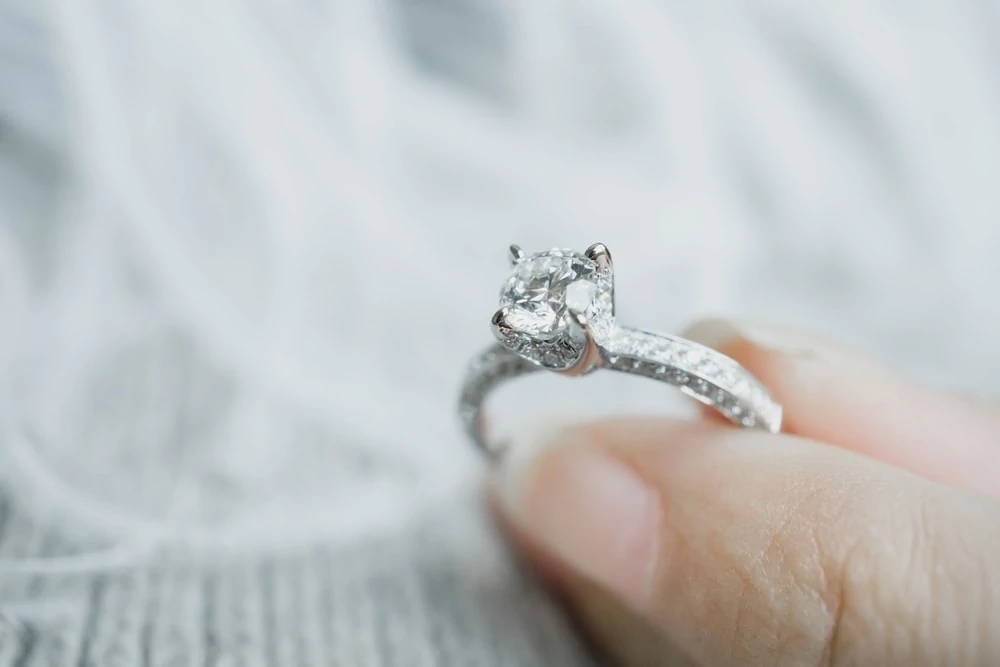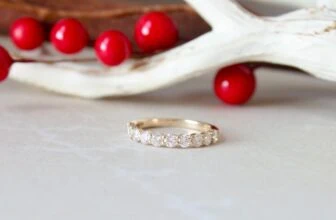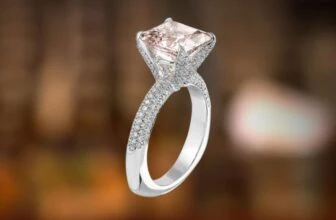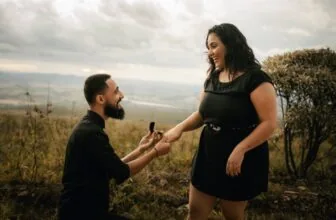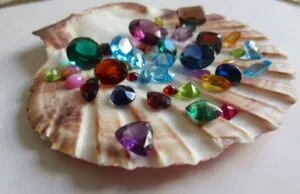
Table of Contents
What’s better than a one carat diamond engagement ring? A 2 carat diamond ring one of course! 2 carat diamonds are large, flashy, impressive, and undeniably prestigious and classy. But the best thing about this diamond size is that it’s not freakishly large to wear daily.
If you’re thinking of buying a 2 carat diamond, you might find that it’s harder than looking for a 1 carat diamond ring. The larger the diamond, the more scope for error there is. This is why it takes expertise and knowledge to sift through the lot to cherry pick the ideal 2 carat diamond.
We’re here to make the job a little easier. Let’s take a look at the quality factors that impact large diamonds and what you need to know when buying the perfect 2 carat stone.
The REAL Size of a 2 Carat Diamond
Most people may not realize the actual size of a 2 carat diamond, which is why this tool from James Allen is quite helpful for conceptualizing the different diamond sizes.
A 2 carat diamond weighs about 200 milligrams, which is a mere .20 grams. To put that into perspective, an M&M weighs .88 grams while a pea weighs .25 grams. So a 2 carat diamond isn’t a very heavy rock.
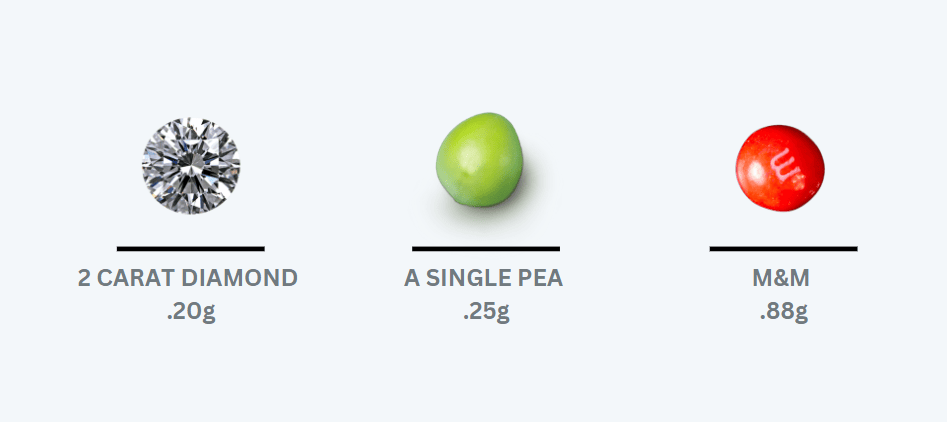
So how big does a 2 carat diamond appear? A round 2 carat diamond measures approximately 8.2mm2 in surface diameter. Compared to a 1 carat diamond which measures 6.5mm2, this is only bigger by about 60%.
The rest of the carat weight remains underneath, much like an iceberg. This part of the diamond isn’t visible, but it’s what gives the diamond sparkle and brilliance.
How Much Does a 2-Carat Diamond Cost?
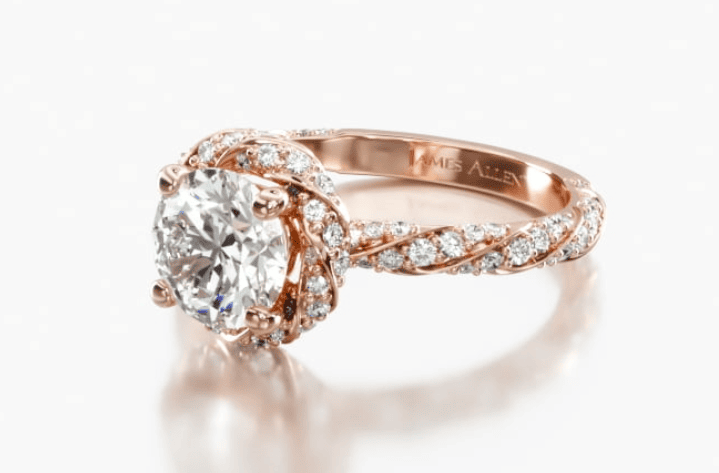
It’s rare to find large high-quality diamonds in nature, which is why diamond prices increase exponentially per carat. While diamonds are abundantly found in nature, only about 1 in every 15 million carats mined annually can be fashioned into a quality 2 carat diamond.
What this means is that a 2 carat diamond will cost more than two 1 carat diamonds or four .50 carat diamonds.
To make this point, compare this 1 carat D color, IF clarity diamond with this 2 carat diamond of similar specifications. The difference in price is over $35,000.
But you can find much cheaper 2 carat diamonds too. The problem is, they won’t look as good.
When talking about the price of a 2 carat diamond, we have to factor in the 4cs (cut, color, clarity and cut) as that has a direct correlation to the price.
Compare the two diamonds in the screenshot below. While both are 2 carat diamonds, the quality of their color, cut and clarity are different resulting in a wide disparity in the prices. Which diamond would you choose?


Clearly, the second diamond is visually and optically superior to the first. However, this comes at a price. It’s well worth paying if you want the diamond to look its best.
There’s another theory that buying a diamond just under standard sizes will be more affordable. In other words, rather than going for a 2 carat diamond, choose a 1.90 to 1.99 stone.
This is not necessarily true today. The demand for stones that range between 1.90 to 1.99 carats is very high and can make any difference in prices almost negligible. Also, a lot of other factors must be considered, which can mean that the diamond under the standard carat weight could end up being more, or just as, expensive.
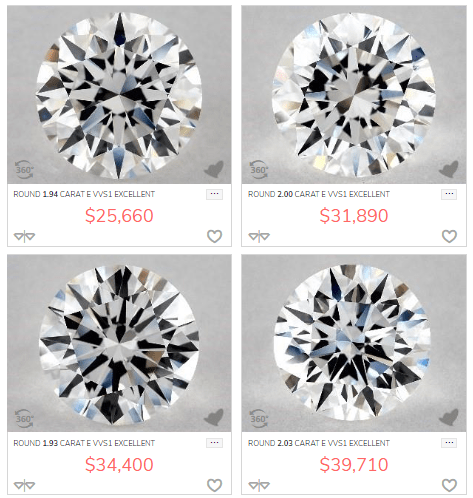
A close look at this screenshot shows that all four diamonds have the same specifications. However, their prices vary vastly. The bottom left diamond is under 2 carats and yet is more expensive than the 2 carat on the top left.
So to reiterate, the price of a 2 carat diamond depends on the quality of the diamond in relation to all 4Cs.
Choosing Color for a 2 Carat Diamond
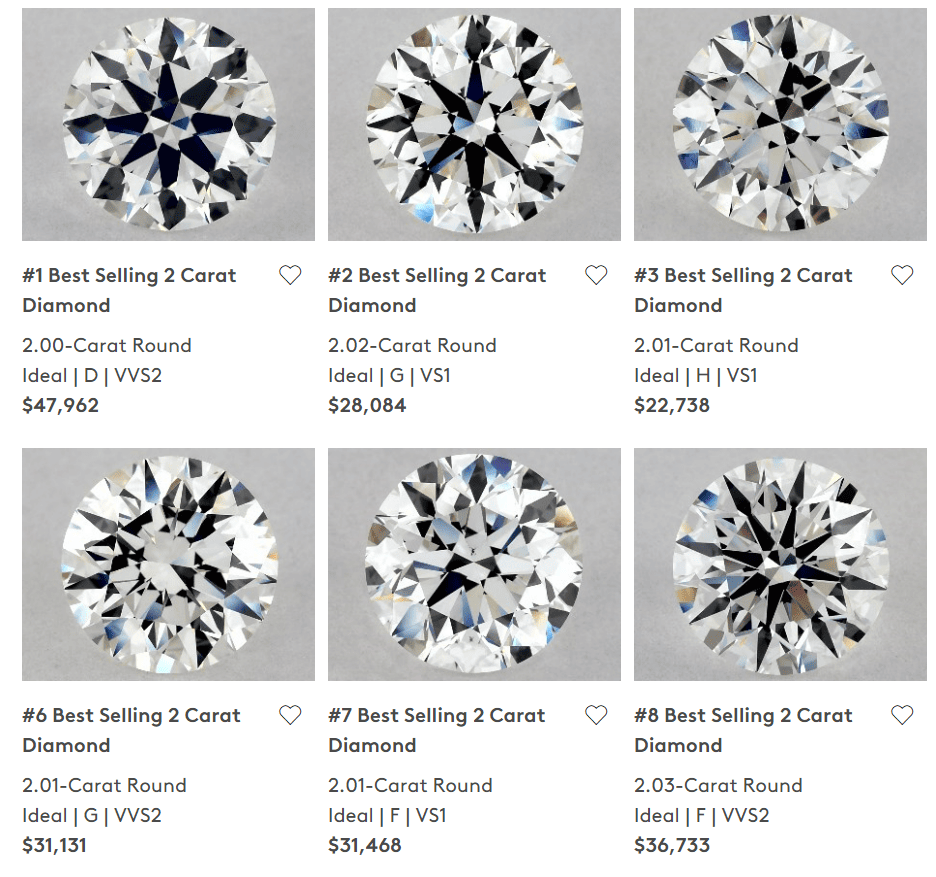
There’s no right or wrong answer for the question: What’s the best color grade for a 2 carat diamond. This really comes down to personal preference.
But if we’re going with the general consensus, then colorless diamonds are the more popular option. Because larger diamonds tend to show warm tints more obviously, it’s best to choose G grade or better for 2 carat diamonds.

However, if you like the warm tones of lower color grade diamonds, go as far down on the scale as you prefer. This is one area that is based on individual preference. Needless to say, all else being equal, each subsequent grade down is lower in price so this is a good way to save thousands of dollars on your stone.
The setting color you choose for your ring will also accentuate or downplay the color of the stone. Yellow and rose gold settings tend to hide or complement diamonds with slight tints, while white gold metals emphasise any color in the stone.
Choosing the Clarity Grade for a 2 Carat Diamond
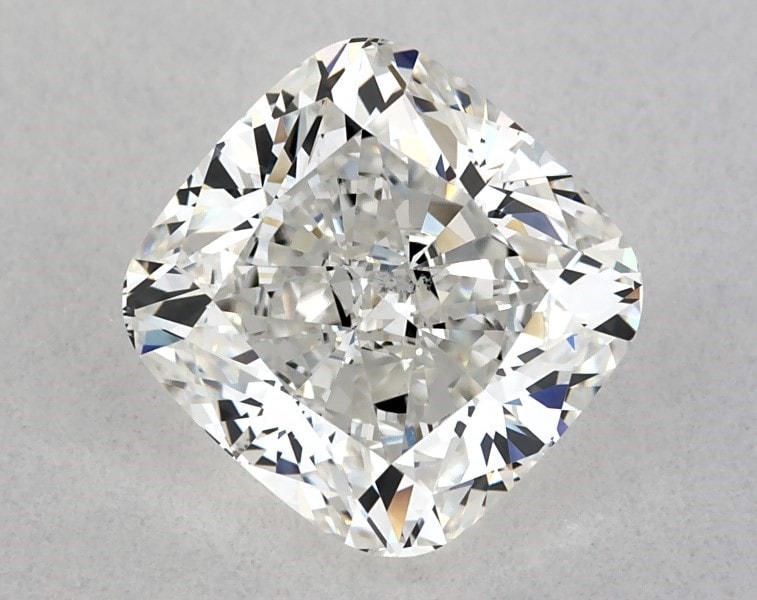
It’s easier to see flaws on a large diamond than on smaller ones. So, when it comes to 2 carat diamonds, clarity is important.
But as we’ve discussed in our article on diamond clarity, what’s more important than the clarity grade is the type of inclusions and where they’re located. If you have the budget, then choose FL-IF grades. These are internally flawless and will not have any visible inclusions.
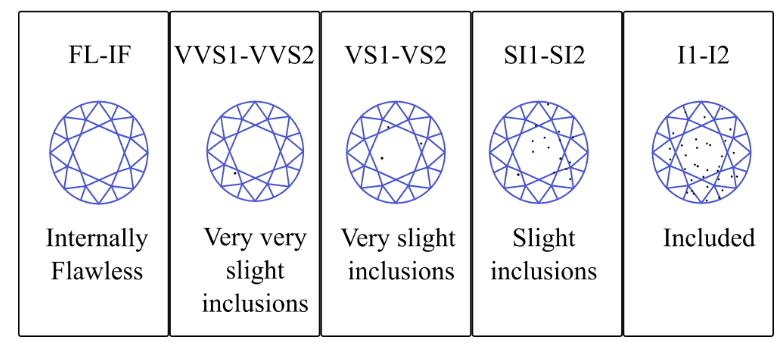
Having said that, buying a premium Internally Flawless diamond is not necessary. The key factor is whether the diamond has any visible flaws that may impact its beauty and value.
We suggest clarity grade VVS2 for the best balance between value and beauty.
But at the end of the day, the most important factor is to look carefully at the actual diamond and check to see if there are any visible flaws. If you’re buying online, choose a store that shows you the images of the actual stone, and not some stock image.
What Cut Should I Choose for a 2 Carat Diamond?
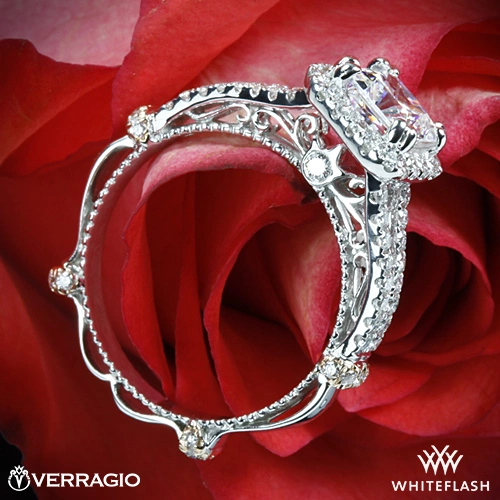
Let’s sort out a common misconception. Diamond cut and shape are not the same. The shape refers to the geometry of the diamond while cut refers to the technical aspects of the shaping process. A round diamond is the shape, but factors like proportion, facets, symmetry, and polish make up its cut.
There are 10 popular shapes used for diamonds, with the most sought after being round brilliants. Choosing your diamond shape depends on your preference. If sparkle is foremost on your mind, the round brilliant cut would be the most dazzling for a 2 carat diamond, as it accentuates the sparkle of the stone with its many well-aligned and carefully positioned facets.
However, the round brilliant happens to be the most expensive cut. It also is the deepest cut, meaning that a large amount of the diamond remains invisible underneath. Other shapes such as the princess or the emerald cuts can make the diamond appear larger and are much more cost effective.
How Important is Cut for 2 Carat Diamonds?
There’s no way around it – cut is the most important factor for a diamond. Cut can make or break your diamond.
What point is there in spending thousands of dollars only to end up with a diamond that is lifeless? This is why experts advise not to compromise on cut quality. Buy the best cut grade that your budget allows.
But what exactly is cut? Cut refers to the proportion and symmetry of the diamond and the technical savvy that goes into shaping the stone from the diamond rough. It takes into account aspects such as depth, table, girdle and culet proportions.
The GIA cut scale ranges from Excellent, Very Good, Good, Fair and Poor. You’ll find that most retailers have their own cut scale, going beyond the Excellent rating to their signature collections, which generally come with a premium. Choosing an Excellent or Ideal cut, or better, will be a lot more expensive than a lower cut grade but it is well worth it.
Assessing Cut Through Light Performance
We’ve spoken about the importance of cut, but how would you know that the diamond has an excellent cut? How to assess cut quality?
This is when the extra data related to light performance comes in handy. Not every retailer provides this information, but this is necessary to evaluate the quality of your 2 carat diamond cut.
When assessing light performance and cut quality, you would be looking for Idealscope, ASET, Hearts and Diamonds and Sarin reports about the diamond. This data gives you exact details about how the diamond works with light and whether or not there is any light leakage.
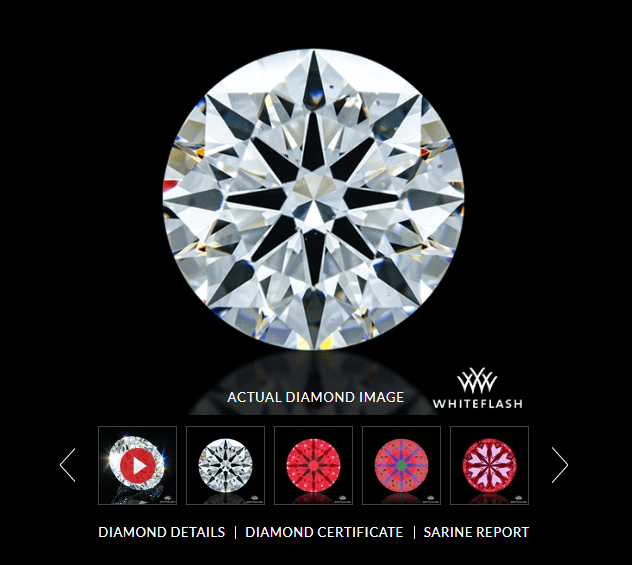
Take a look at the image above from Whiteflash. Even if you are not well-versed in evaluating this information, simply by looking, you can tell that there is perfect symmetry and proportion of the hearts and arrows in the images provided. The proportions appear perfect, which is why this is A Cut Above diamond.
While some sites such as Whiteflash and Brian Gavin already have light performance information provided on their site for most of their collections, other retailers such as James Allen require you to request this information from them for up to 3 chosen diamonds. Take the time to go through this information to avoid purchasing a diamond that will not retain light as desired.
Considering Certification
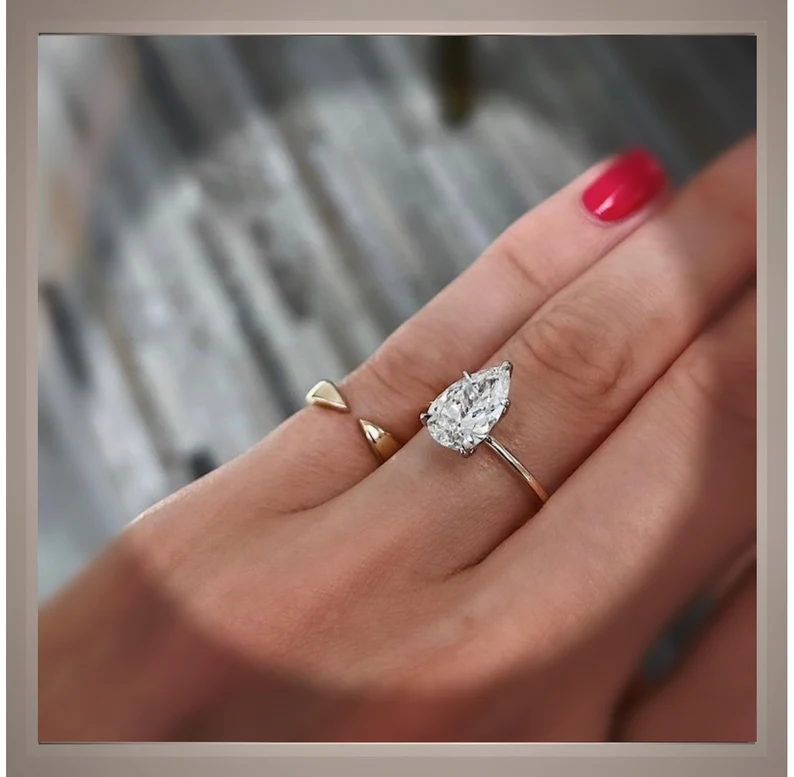
When forking over such a large amount of money, you need to know that you are getting your money’s worth and that the diamond is exactly as it should be. This is why it’s important to obtain a certificate from a reputable lab for your diamond.
Most trustworthy retailers will provide a lab report with the diamond, but not all labs are the same.
The most recognized diamond labs are the GIA and AGS. These labs have stricter and more consistent methods of grading a diamond, which is why diamonds certified by the GIA or AGS can tend to a bit more expensive.
A diamond with a higher grading from another lab could be given a lower grading when assessed by GIA or AGS. You know you’re getting quality with these labs.
What Setting to Choose for a 2 Carat Diamond Ring?
Choosing a setting to enhance and complement your 2 carat diamond is about as important as choosing the right diamond. The quality of the setting is critical because it will keep your diamond safe while simultaneously showing it off to the best of its appearance.

A halo setting enhances the apparent size of a 2 carat diamond, making it appear even larger than it is. It also gives the stone an added layer of protection, creating a buffer around it.
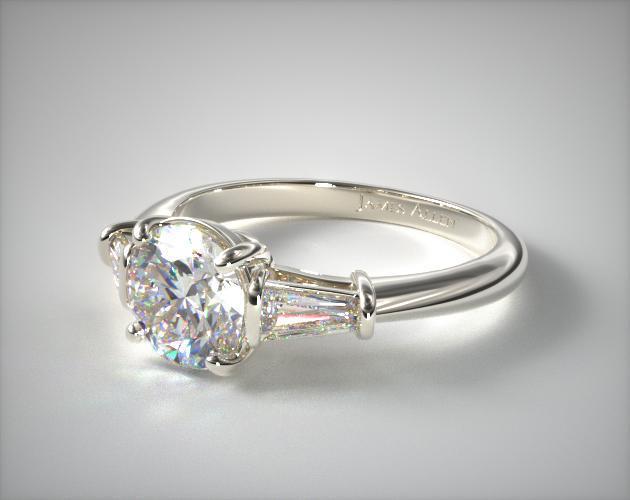
A three stone ring setting is known for its symbolism, but these rings are also versatile, with lots of customization options, and have a striking visual impact and perfect symmetry. This is why it’s among the most popular settings for diamond rings.
If you are considering a bezel setting, it will provide more safety for your diamond but will also make the diamond appear smaller. Solitaire settings bring out the diamond to the best effect, maximizing its brilliance, but there is the risk of the stone getting bumped or knocked.
Needless to say, each ring setting has its own pros and cons. A well-crafted setting with strong prongs will clutch onto your diamond and keep it safe.
I Want a Big Diamond But I Don’t Have the Budget
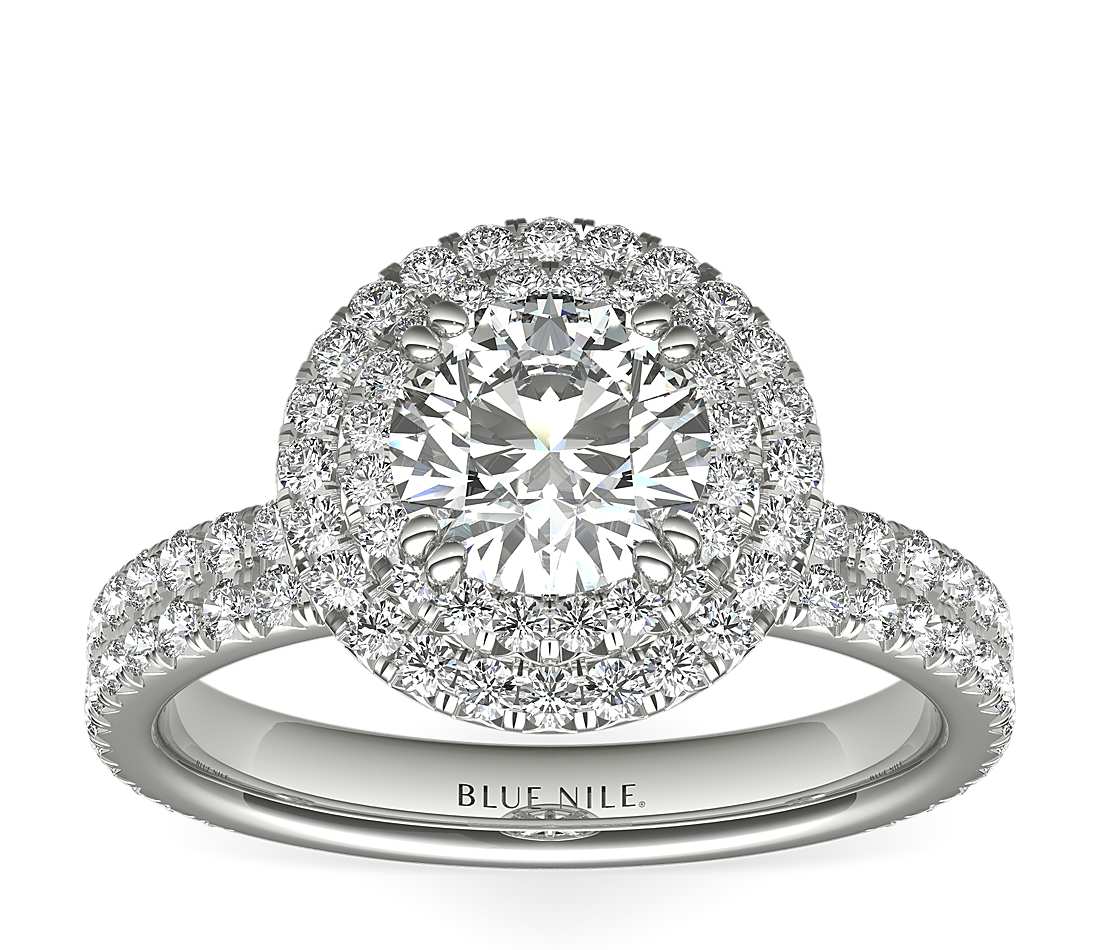
A 2 carat diamond will burn a deep hole in your pocket and not everyone will be able to afford this, even though you or your loved one may have your heart set on a large stone.
One way to go about this is to carefully choose your ring setting to visually enhance the size of a smaller diamond. For quick and helpful tips, check out our article on how to make your diamond appear larger.
You could also look into synthetic diamonds as a great alternative to mined diamonds. These are lab-created stones that are sustainable, equally beautiful as natural diamonds, and much more affordable.
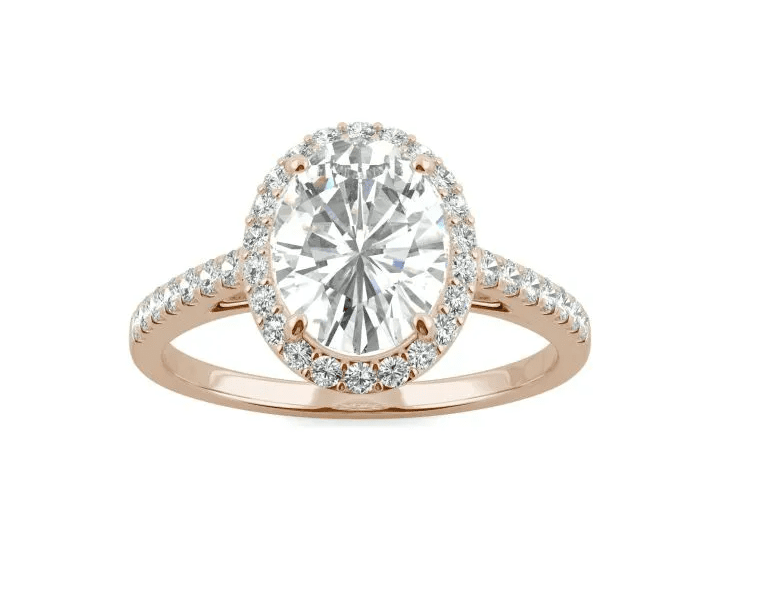
The other option is to go for a different stone, such as a moissanite, that looks like a diamond but does not come with the steep price tag.
Check out this moissanite ring from Charles and Colvard. It sparkles as brilliantly as a diamond and is respected gemstone in its own right. If this is something you would be interested in, we recommend Charles and Colvard as the experts in the moissanite field. Read our review on Charles and Colvard here.
Where to Purchase a 2 Carat Diamond Ring?
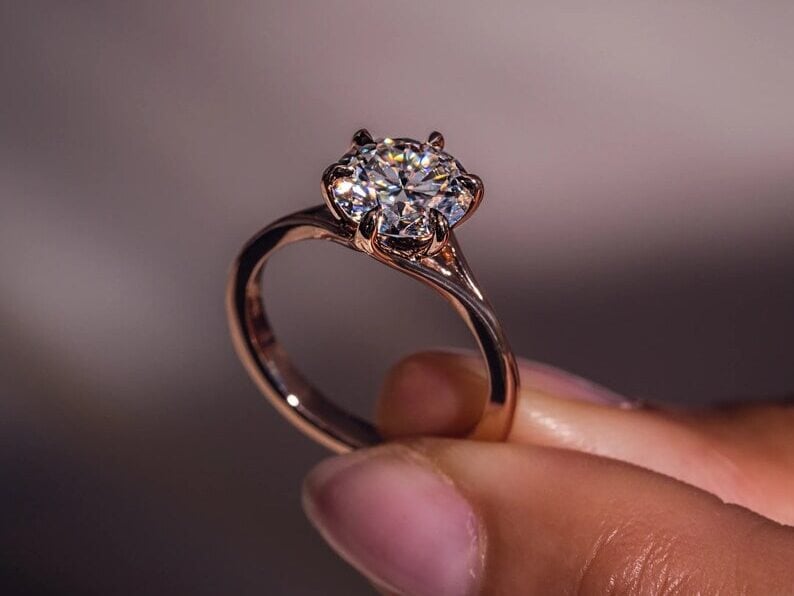
Finding your ideal 2 carat diamond at the local jewelers may be difficult to do, as most physical stores don’t have big inventories of large diamonds. Taking your search online will provide more options and competitive prices.
Because you’re working with a bigger budget, you’ll have a wider range to choose from. However, while there are many quality diamond retailers online, for such a large purchase it’s important to vet the retailer carefully.
Here are our recommended retailers, known for their diamond quality.
We recommend the following retailers:
Why: Superior diamond imaging, competitive prices, high quality, wide range
An online giant in the diamond space, James Allen a stunning collection of high-quality 2 carat diamonds. The images and videos are unparalleled in quality and makes shopping online similar, if not better, to shopping in store.
Why: Competitive prices, wide range, great quality
Known for dominating the online diamond industry since the late 1990s, Blue Nile offers one of the largest online diamond inventories. Search 2 carat diamonds here at competitive prices, solid after-sales policies, and good customer service.
Why: Superior cut quality, exclusive range, stunning designs
Whiteflash has earned an international reputation for the elite quality of their precision cut diamonds, and for their impeccable collection of designer engagement rings. Check their stunning range of diamond jewelry and loose diamonds.
Why: Impeccable quality, superior cut, small but exclusive inventory
Brian Gavin is a renowned expert in diamond cut – and it shows in their superior diamond quality. For the very best in diamonds, search their inventory of designer diamond jewelry and loose diamonds.
Why: Try before you buy, build your own ring, great quality
If you want to try out how a large 2 carat diamond ring looks on your finger before you commit to buying one, check out With Clarity’s Home Preview Service which is completely free. Find out more here.
Check out our quick comparison of the top online engagement ring retailers for more information. Also check out our article on Where to Buy Loose Diamonds.
Wrapping Up
So, to wrap up, is a 2 carat diamond ring a good choice for you? This depends on your budget and other factors like your lifestyle. When selecting a 2 carat diamond, it’s important to consider all aspects of quality, and not just size. What’s better? A sparkling, vivid 1 carat diamond, or a lifeless 2 carat diamond with inclusions?
But if chosen carefully, a 2 carat diamond ring can be breath taking. It offers a perfect balance of size and sparkle, making it an ideal choice for engagement rings, and is versatile, accommodating various cuts and settings.


